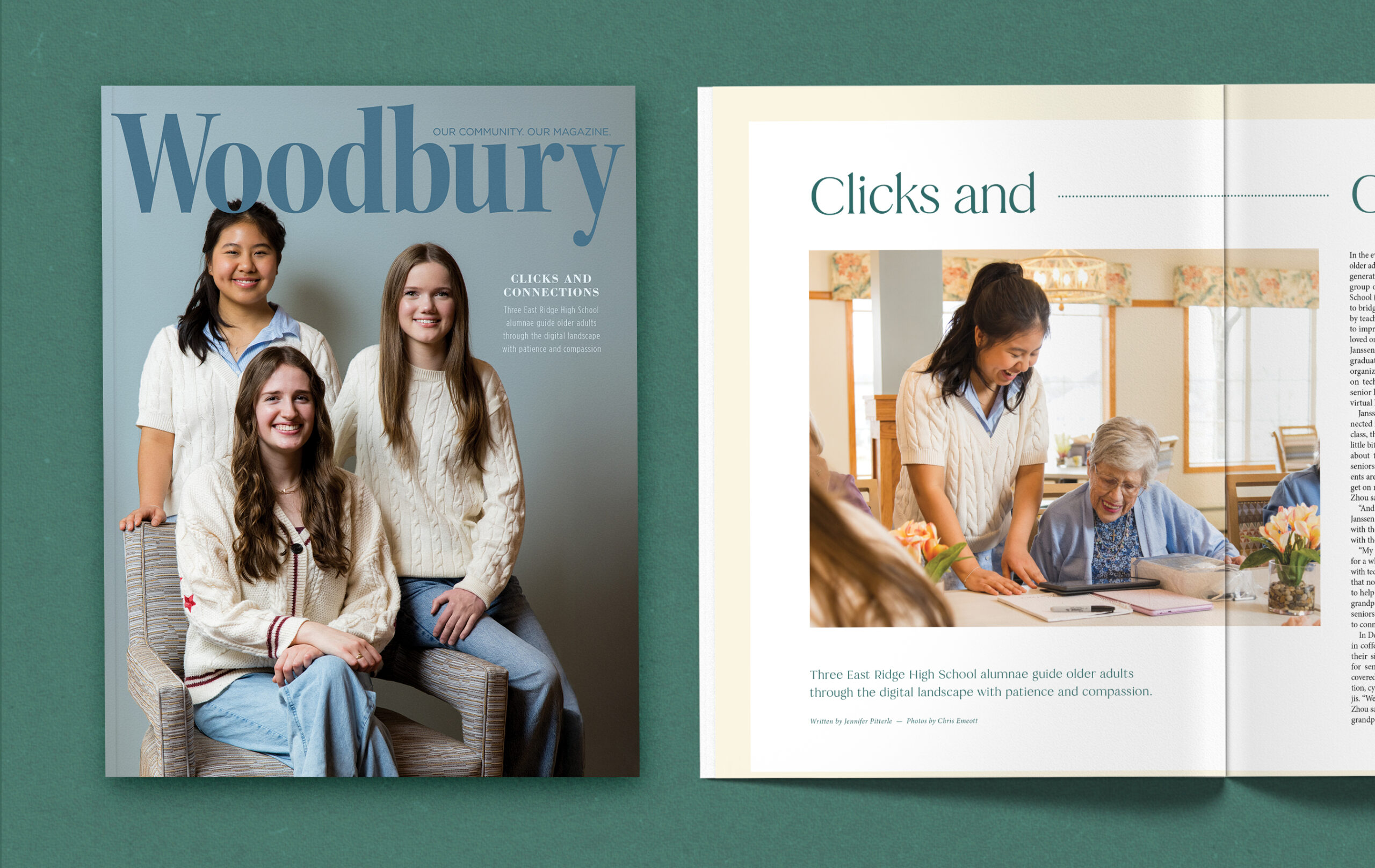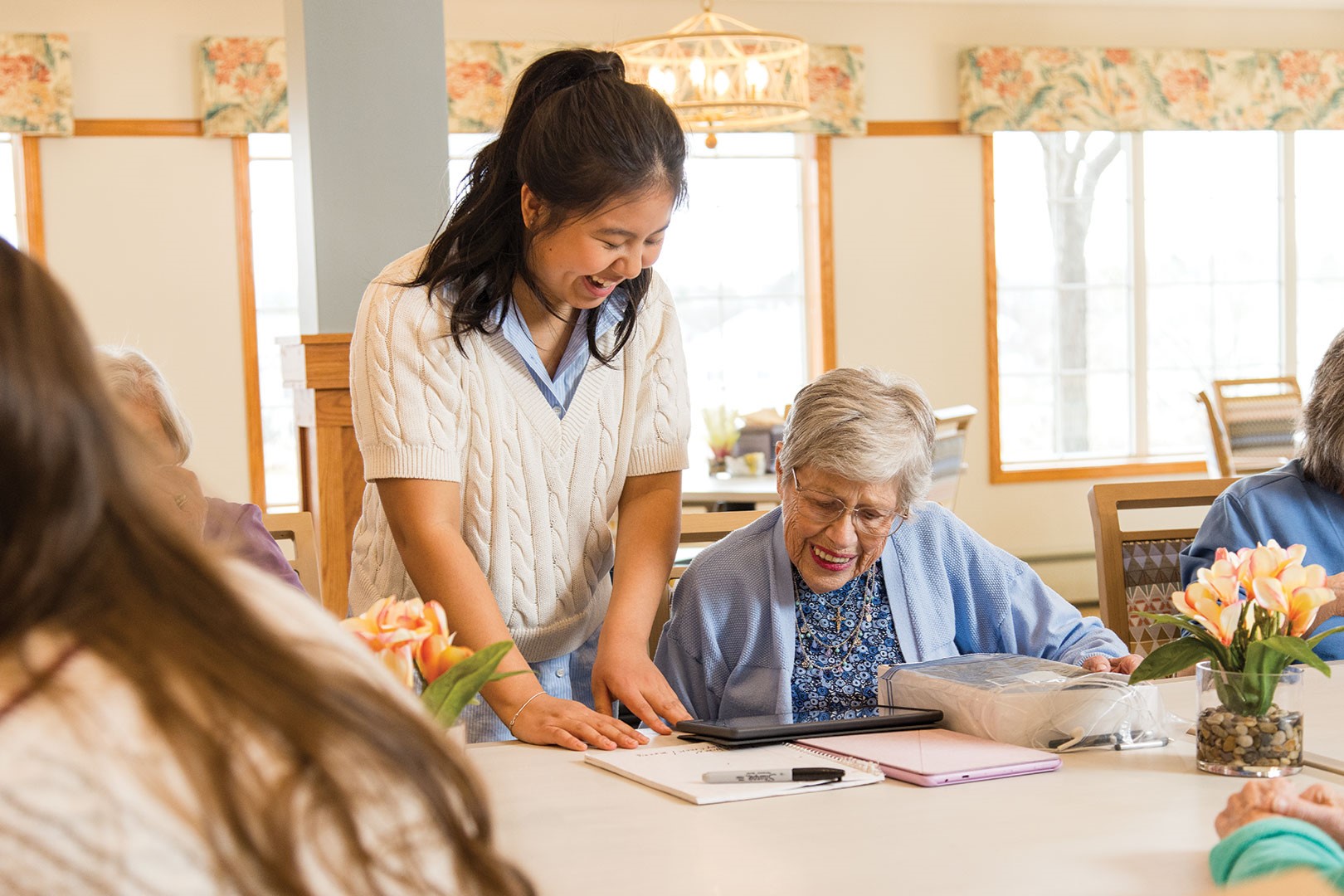
Suchitra Sairam’s student, Mahati Rayadurgam, showcases details of hand movements and Bharatanatyam costumes. Photo: Chris Emeott
Area students prepare for the performance of a lifetime.
We all have roots—the foundational pieces of who we are, built from life experiences, personal values, beliefs and traditions. These roots, in part, define us as people and often guide our decisions.
Suchitra Sairam, founder of Kala Vandanam Dance Company in St. Paul, honors her cultural roots through the art of dance. As the sole teacher at the studio, Sairam educates her students on Bharatanatyam—one of the most recognized and practiced Indian dance styles. Culturally, this style of dance has a deep connection to Indian history, religion and music. And although Bharatanatyam pays homage to India’s past, Sairam knows that many women before her were not offered this same opportunity to dance. At the pinnacle of her career, she’s truly created a place for young women to honor their past and embrace their future.
As a young girl, Sairam disliked Indian dance class, quitting after a few short months to explore her other interests, such as tap dance and soccer. It was fate when her family moved to San Antonio, Texas, and many other girls her age were enrolled in Bharatanatyam classes, convincing her to return to the studio. Sairam quickly picked it back up and rigorously trained for her Arangetram—a two to three-hour-long solo debut performance, one that marks a qualified Bharatanatyam dancer. “I was very serious about it,” Sairam says. “If I take something on, I’m going to do it to the best of my ability and work hard.” Now an experienced teacher of over 60 students in her own dance studio, Sairam’s hard work has paid off.
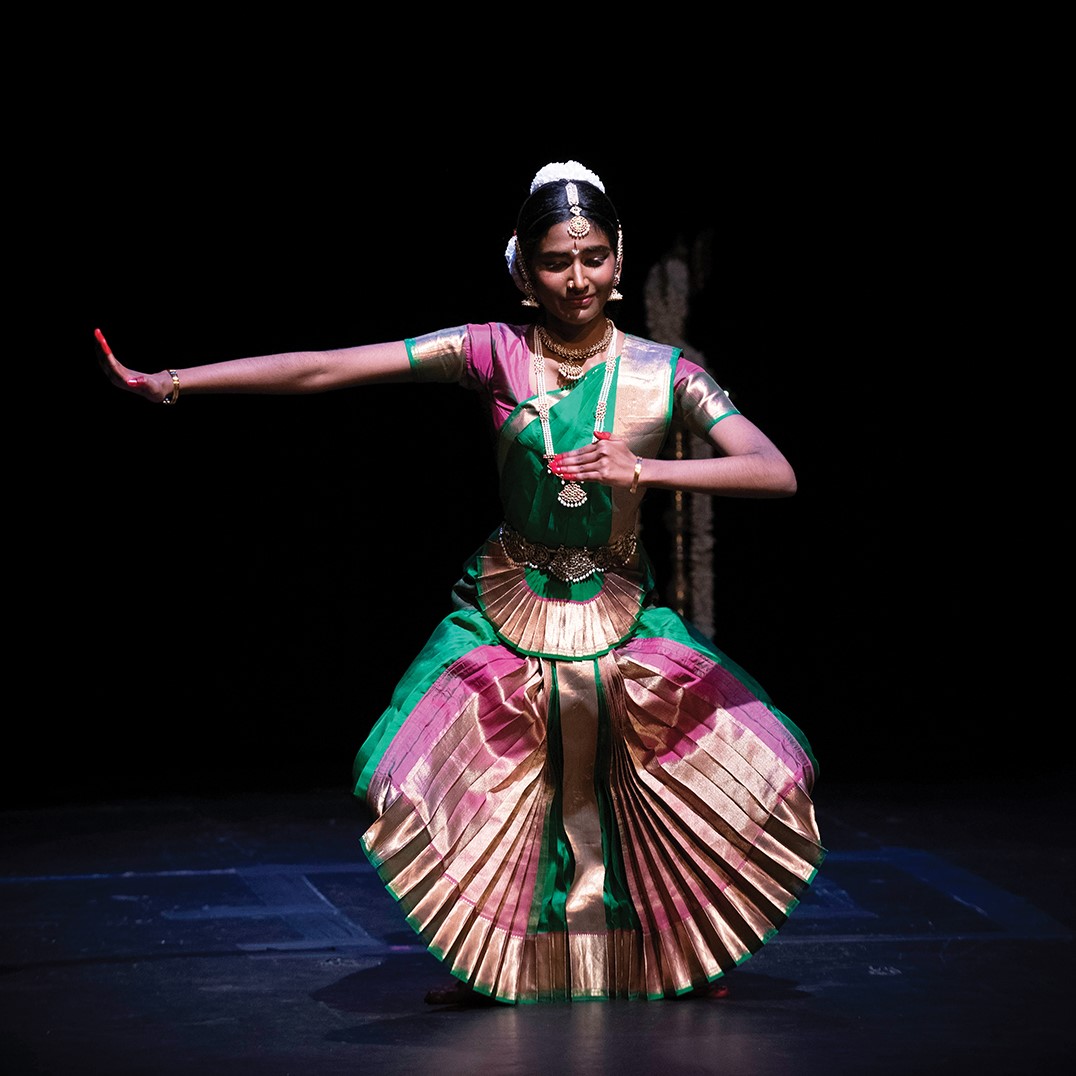
Sruthika Ramu performed her Salangai Pooja in March 2024. This solo stage performance is where she was presented with her ankle bells. Photo: Bruce Silcox
Sruthika Ramu, a junior at East Ridge High School, spends hours each week at Kala Vandanam, working toward her very own Arangetram. Last March, Ramu performed her Salangai Pooja—the hour-long performance that precedes the Arangetram in difficulty and maturity. “When a student is able to sustain good technique and expression for multiple pieces, the teacher may determine they can begin preparing for their Salangai Pooja or introductory solo concert where they wear ankle bells for public performance for the first time,” Sairam says. “After that milestone, gaining more proficiency and experience, the teacher may determine the student has the capability, capacity and desire to present their Arangetram or formal solo professional debut. After the Arangetram, students continue to train in advanced repertoire, begin to explore choreography and further their performing pursuits if desired.”
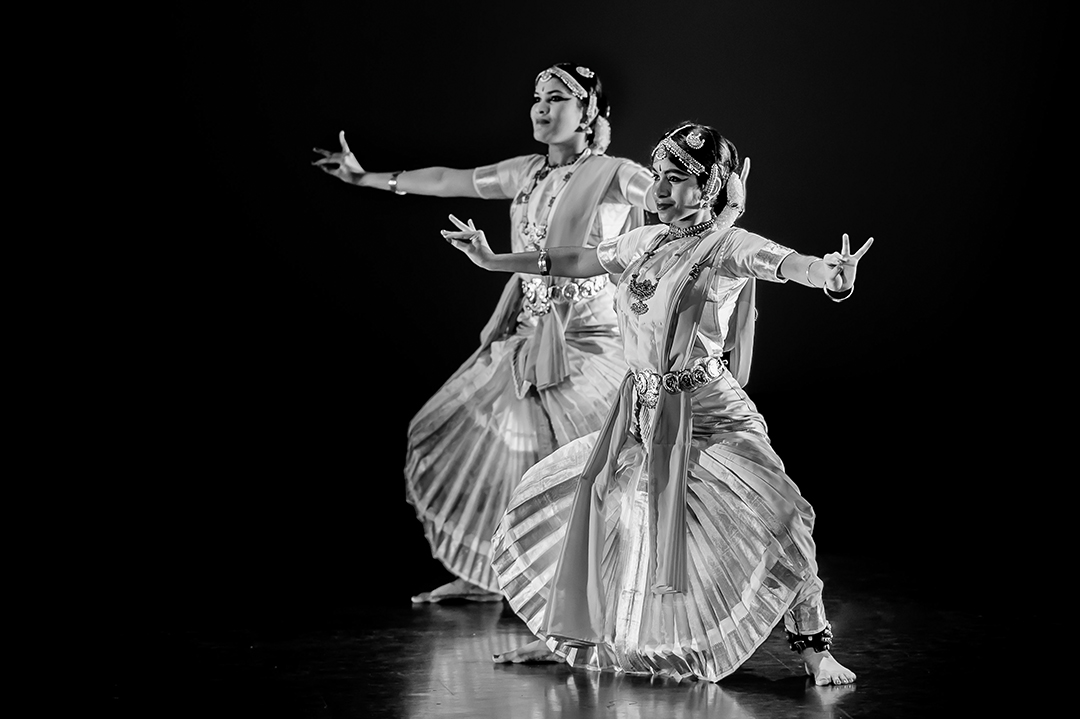
A scene from Kala Vandanam’s original production, Ritu – The Seasons, depicts Hemanta, an early winter. Photo: ReyMash Photography
Ten years into her time with Kala Vandanam, Sruthika continues to focus on dance because of its connectivity to her religion and culture. “I practice Hinduism, so learning this form of art is a different way to experience religion,” Sruthika says. “I’ve learned a lot of new stories about Hinduism that I hadn’t learned on my own, so it teaches me about Indian history and culture.” Sruthika feels in tune with her roots when dancing. “This art form originated there,” Sruthika says. “I feel free when I dance, and it connects me back to my culture.”
When students first come to Kala Vandanam, Sairam focuses on the subtleties that the style of Bharatanatyam requires. “When we start training, we start with body awareness because we use every part of our body when we dance,” Sairam says. “We communicate with our eyes, facial expressions, intricate hand gestures and complex movements.” Then students move on to master adavus or basic units of movement, while continuing to work on fundamental techniques. Finally, as dancers progress and are deemed ready to train for their Arangetram, the focus shifts to creating a collective of adavus that challenge the dancer physically and mentally. Sairam says, “A large part of the choreography is finding the balance of highlighting their strengths but also pushing them to elevate their entire artistic ability. Finding the right complexity of pieces, themes and tones are very important.” Creating an original work of art that, once complete, is an hourslong performance, is a lot to demand from a young artist. “It’s a lot of a mental game and working on stamina,” Sruthika says. Training for the Arangetram typically lasts 12 to 15 months.
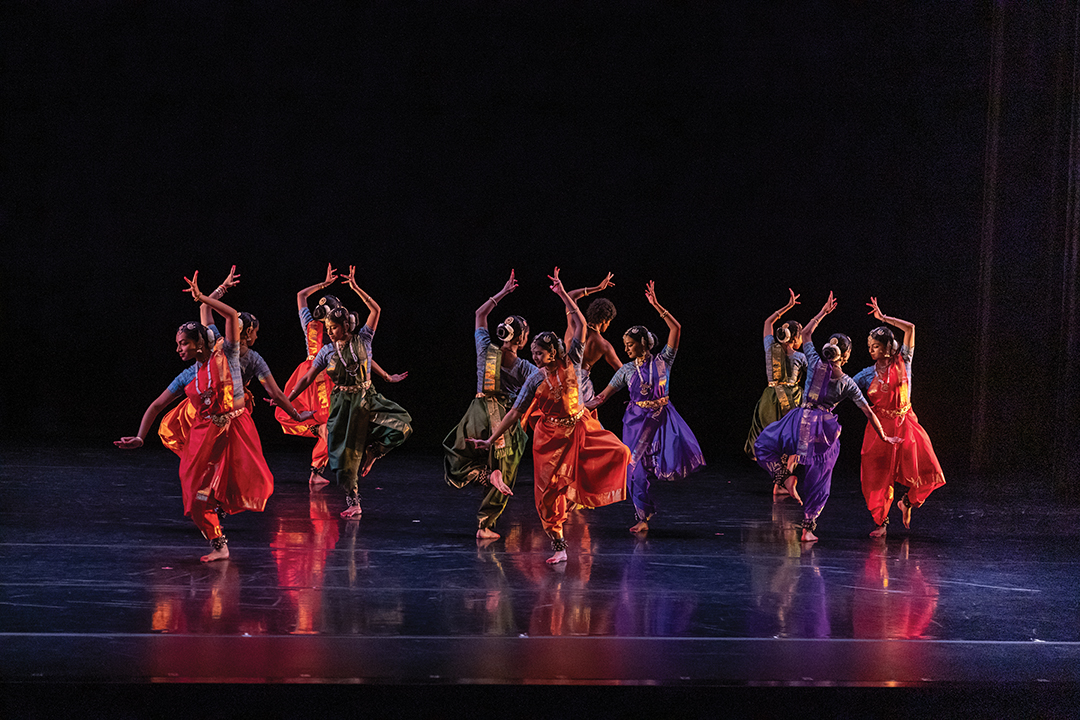
A moment from Kala Vandanam’s 20th anniversary production Sampradaya, featuring complex abstract movement. Photo: Bill Cameron
Another aspect that Ramu appreciates about Kala Vandanam is the high expectations—not that every practice is perfect or the speed at which skills are developed, but rather, the focus and attention students put toward their craft. Even the apparel worn during class is intentional, as Sairam asks her students to dress in traditional Indian attire for rehearsals, including a kurta and dupatta for women. Hair should be tied back in respect of the dance and to avoid distractions. “How we dress and appear in class and on stage influences our mindset,” Sairam says.
Stage attire, on the other hand, takes months of planning and sourcing. Sairam hand picks her students’ saree—the six feet of fabric, often made of silk and some sourced directly from India—that will elegantly envelop the dancer during the Arangetram performance. “There’s a connection between the dancer and the costume,” Sairam says. “It’s a representation of your journey of investing in your art, yourself and your culture.”
Although focused on individual dancers’ skills and performances, Kala Vandanam has created a community of support for students of all ages and experience levels. “You’re not pursuing your excellence at the cost of someone else, because we are all supporting each other,” Sairam says. “We come together to create things as an ensemble that you can’t do as an individual.” The collective passion and dedication of this group of dancers is what sets them apart and what brings them back to the studio week over week. “The biggest joy for me has been this group of students I’ve had for many many years. These are long-term relationships,” Sairam says. “It’s not unusual to be with me for eight to 15 years. I see them grow up and am part of that process. I’m grateful.”
Kala Vandanam
Facebook: Kala Vandanam – St. Paul
Instagram: @kalavandanam
YouTube: Kala Vandanam
X: @kalavandanam







